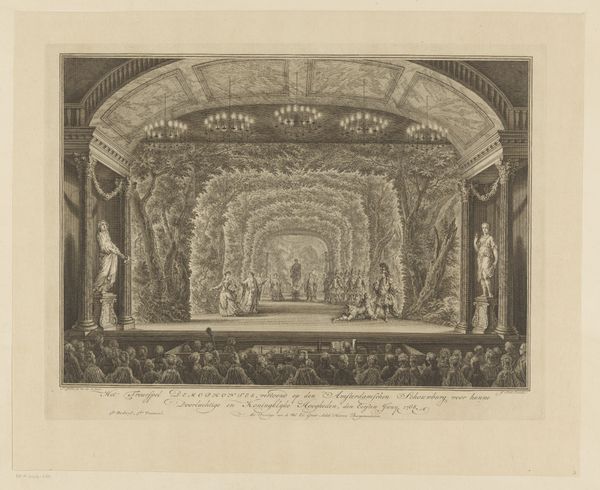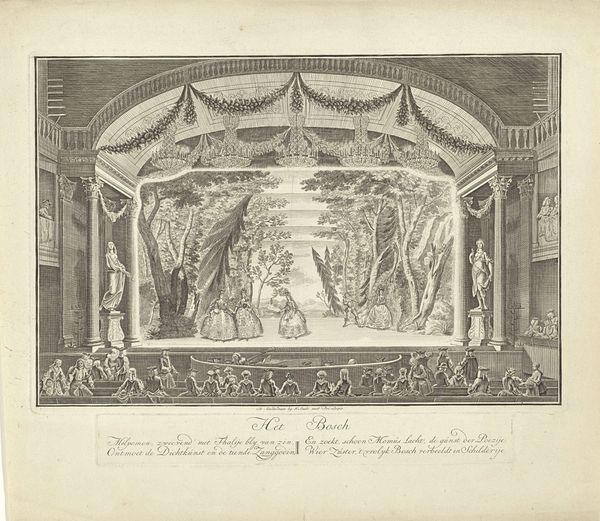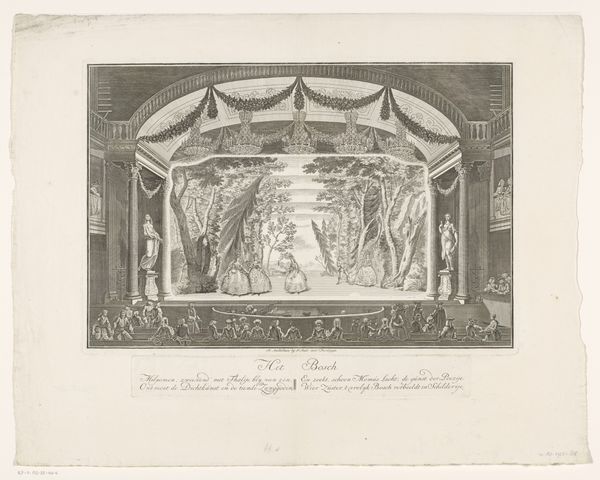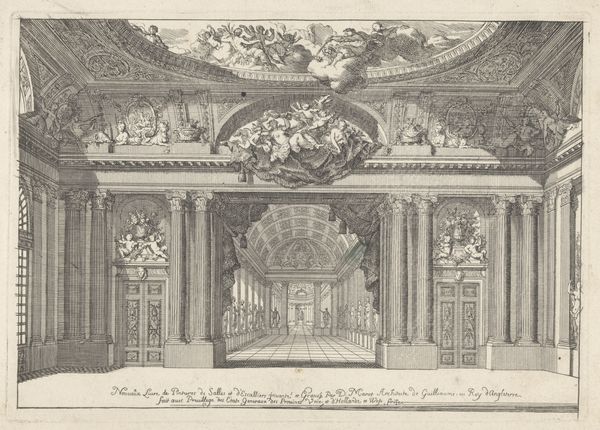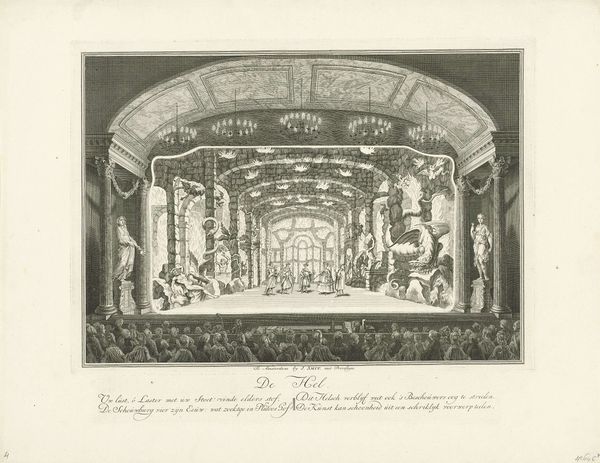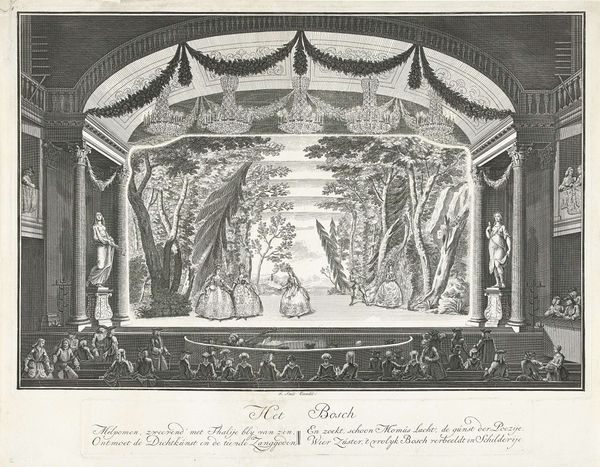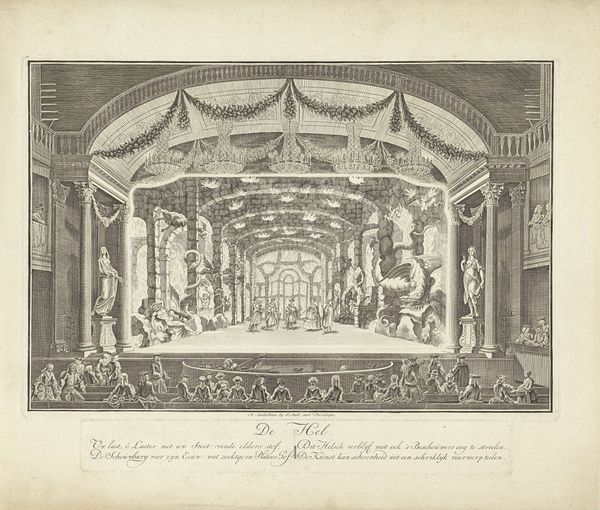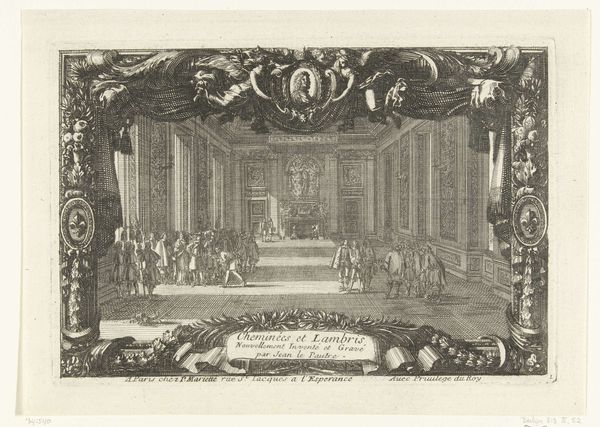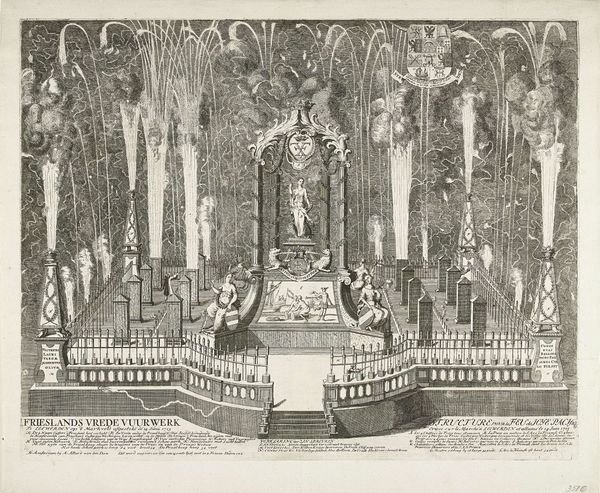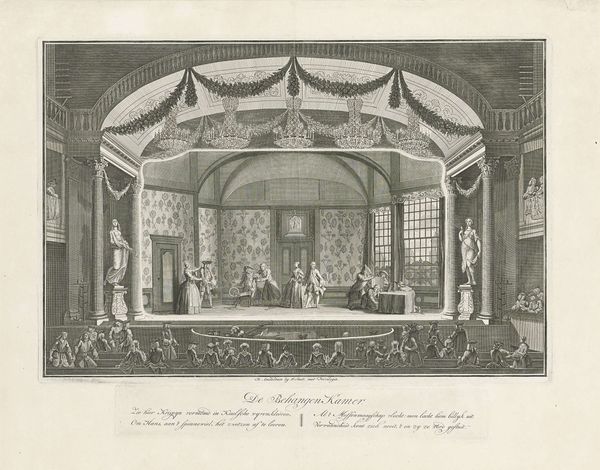
Toneelvoorstelling in de Amsterdamse Schouwburg voor het prinselijk paar, 1768 1769 - 1773
0:00
0:00
simonfokke
Rijksmuseum
Dimensions: height 300 mm, width 403 mm
Copyright: Rijks Museum: Open Domain
Simon Fokke captured this theatre performance in Amsterdam in 1768, evidenced in fine lines etched on paper. Notice the dominant archway of foliage, framing the stage within a stage. This verdant motif taps into the ancient concept of the locus amoenus, the idyllic, sheltered garden representing paradise or a space of refuge. This symbol has roots stretching back to classical literature and art, where the garden was a site of love, peace, and contemplation. Consider how such a setting recalls Botticelli's "Primavera," where Venus resides in a similarly lush, fertile enclosure. Here, though, the garden is not a natural haven but a constructed artifice, a performance mirroring the performance within. The symbolism shifts: Paradise is now a stage, inviting us to reflect on the constructed nature of our own ideals and pleasures. The performance evokes a psychological resonance, engaging our subconscious desire for harmony even amidst the artifice of courtly life. As we see, the symbol resurfaces, evolves, and takes on new meanings in different historical contexts.
Comments
No comments
Be the first to comment and join the conversation on the ultimate creative platform.
